|
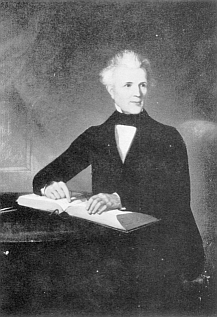
|
DR JAMES MITCHELL (1793-1869)
NEW SOUTH WALES PIONEER
Born at Clinkhill, Dalgety, Fife, Scotland, on 24 January 1793
Died at Cumberland Place, Sydney, New South Wales, Australia, on 1 February 1869
[This article also includes information on the members of Dr Mitchell's family who remained in Fife.]
|
Family and early life
Dr James Mitchell's paternal grandparents were John Mitchell and Isabel Stocks, both born in the Parish of Aberdour, Fife. John was born in 1724 and Isabel in 1723. They were married in Aberdour in 1748. According to the International Genealogical Index, John was the son of Robert Mitchell. John may have had a brother, Francis, born in Aberdour in 1726.
John and Isabel had seven known children, born between 1749 and 1768 - Robert and William in Aberdour; and John, David, Thomas and Isabel in the Parish of Inverkeithing (probably in the small village of Hillend), Fife. David, who was Dr James Mitchell's father, was born in 1755.
In
1779 David married Margaret Low, the daughter of John Low, Laird of Wallsgreen (sometimes called Wellsgreen) in the Parish of Auchterderran, Fife. Margaret was the daughter of John Low and Rachel Walls, and it is likely that John and Rachel had inherited the small farming estate of Wallsgreen from Rachel's family (after whom the estate was named). David's marriage to Margaret would have increased his social status, although I'm not suggesting for a moment that that
was his main aim! The Low connection would also have meant that David and Margaret's children would in due course benefit from having relatives who were professional men. A strong influence on their son James is likely to have been his uncle, Dr James Low - in the same way that Dr Low influenced another of his nephews, Dr James Low Warren (1791-1871). James Low Warren studied medicine at Edinburgh University, where he took the degree of M.D. with the gold medal of his year in 1814. His Latin
thesis was dedicated to his uncle (his mother's brother), Dr James Low - his 'very dear relative' - and is held by the library of the British Museum, London. He entered the army, and was appointed surgeon to the army of occupation in Paris, after Waterloo. He served in the West Indies, on the staff for ten years. In Jamaica, he owned large sugar plantations. He liberated all his slaves before the Emancipation Act was passed, and, when offered compensation by the British Government, refused it. He was surgeon
to the 6th Dragoon Guards. On retiring from the army, he settled in Edinburgh, and was associated with Sir James Young Simpson in the experiments which led to the discovery of chloroform. He retired from professional life, and died at Southsea in 1871, aged 81 years. The similarities between his early career and that of his cousin, Dr James Mitchell (see below) are striking, and are, I think, more than a coincidence!
In the early 1780s David Mitchell became the tenant of
a small farm, Clinkhill (now known as Clinthill) , on the Fordell Estate in the Parish of Dalgety, Fife, and about one mile north west of Hillend.
Dr James Mitchell was born at Clinkhill,
and it was here that he spent his first
seven years - in an idyllic setting, overlooking the Firth of Forth.
|
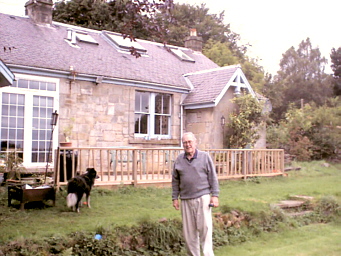
John
Merewether at Clinkhill in 2002 (see text).
|
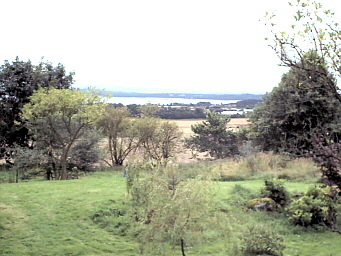
The
view from Clinkhill, across the Firth of Forth.
|
|
.JPG) .JPG)
Capeldrae Farm in 1999. The wall in the right hand photo probably dates from James Mitchell's time.
|
On Martinmas (11 November)
1799, David Mitchell became the tenant of the farm of Capeldrae (also spelt Capledrae) in the Parish
of Auchterderran, Fife, some eight miles north of Clinkhill. As the farm buildings
were in 'a decayed and ruinous condition', he was granted
the sum of £200 to build a new house and repair the other structures.
David Mitchell and Margaret Low had nine known
children. They were all (with the possible exception of Agnes) born at Clinkhill.
The first was Rachel, who was born in 1780 and married Andrew Aitken
in 1806 - they had a daughter, Jane, who looked after her grandfather, David,
and her Uncle William and Aunt Jean at Capeldrae, as they got older.
The eldest son, John, was
born in 1784, and became a farmer at Redwells in the Parish of Kinglassie. The family also probably had the neighbouring farm of Finmont. This branch seems to have prospered, as John's son, Alexander, was able to build and donate the Mitchell Hall to the people of Kinglassie in 1896. They also seem to have inherited the Wallsgreen estate (see above), which passed in due course to John's daughter, Margaret. Margaret Mitchell and her brother David farmed on their own account at Hilton of Carslogie in the Parish
of Monimail. I believe the Wallsgreen property was eventually bought by the Bowhill Coal Company of Cardenden, which was taken over in 1909 by the Fife Coal Company.
The second son was David
(1786-1867), my great great grandfather. He returned to Clinkhill where he
married a Fordell miner's daughter, Christian Japp, and raised a family. He was to return to Capeldrae
in later years, perhaps when his wife died.
The second daughter, Jean
(1788-1855), never married and probably lived at Capeldrae for most of her
life.
The third son, William
(1790-1872), also remained unmarried, and became the tenant of Capeldrae after
the death of his father, remaining so for the rest of his life.
Then came the fourth son,
James. His baptism is recorded in the parish registers for Dalgety -
'James, lawful son to David Mitchell and Margaret Low his spouse in
Clinkhill was born January 24th and baptized 27th before these witnesses James
Cousins John Roxbrugh and others.' 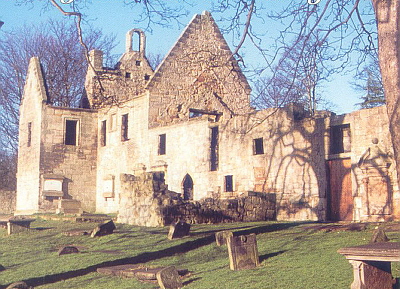 The original register is confusing at this point - the
year of birth looks like 1793, although the entries are mixed up and it might have been 1792 or 1794. Australian biographies usually say that he was born in 1792. I
therefore looked into this in some detail. I first of all satisfied myself that
baptisms took place on Sundays, and then checked to see in which of these three
years the 27th of January fell on a Sunday. This happened only in 1793. I
therefore concluded that James Mitchell was born at Clinkhill on Thursday, 24th
January, 1793, and baptised on Sunday, 27th January, 1793. The baptism would have taken place in St Bridget's Kirk,
Dalgety (pictured right; photo courtesy of Eric Simpson). There was no civil registration in Scotland at the time and
therefore no birth certificates, so it is understandable that some biographies give the wrong year for the birth. It is also possible that James himself was the source of the error. Perhaps at some stage in his early life he had to lie about his age, and maintained the fiction thereafter.
The original register is confusing at this point - the
year of birth looks like 1793, although the entries are mixed up and it might have been 1792 or 1794. Australian biographies usually say that he was born in 1792. I
therefore looked into this in some detail. I first of all satisfied myself that
baptisms took place on Sundays, and then checked to see in which of these three
years the 27th of January fell on a Sunday. This happened only in 1793. I
therefore concluded that James Mitchell was born at Clinkhill on Thursday, 24th
January, 1793, and baptised on Sunday, 27th January, 1793. The baptism would have taken place in St Bridget's Kirk,
Dalgety (pictured right; photo courtesy of Eric Simpson). There was no civil registration in Scotland at the time and
therefore no birth certificates, so it is understandable that some biographies give the wrong year for the birth. It is also possible that James himself was the source of the error. Perhaps at some stage in his early life he had to lie about his age, and maintained the fiction thereafter.
David and Margaret's fifth
son was Ebenezer, born in 1794. No further information has yet been found about
him. He may have died at an early age.
The sixth son was Thomas
(1795-1875) who was educated at Edinburgh University. He became a Minister of
the Church of Scotland at Oldhamstocks, East Lothian. He married Jessie Lowe
Warren in 1851, and they had three daughters. (Jessie Lowe Warren was the full
cousin, once removed, of her second husband, Thomas Mitchell. She was also
reputedly the great granddaughter of John Warren, Captain in the Irish Brigade
of the French army and standard-bearer to Prince Charles Edward Stuart at
the Battle of Culloden in 1746.)
A further daughter, Agnes
(dates unknown),
married James Clark, a farmer at Stenhouse, near Burntisland - they had at
least one daughter, Jessie, who died in 1828, aged six, and is buried in
Burntisland Parish Churchyard.
.jpg) David Mitchell senior died in
1829, and his wife, Margaret Low, followed him in 1838. They, and three of
their children - David, Jean and William - are buried in Auchterderran
Churchyard. Even though son James was by then so far away in Australia, he
received the same attention in his father's will as did the other children. Pictured on the right is the headstone at Auchterderran. Yes, it is leaning!
David Mitchell senior died in
1829, and his wife, Margaret Low, followed him in 1838. They, and three of
their children - David, Jean and William - are buried in Auchterderran
Churchyard. Even though son James was by then so far away in Australia, he
received the same attention in his father's will as did the other children. Pictured on the right is the headstone at Auchterderran. Yes, it is leaning!
The various inscriptions on it read:
(Front) Erected to the memory of David Mitchell, farmer, Capeldrae, who died 23 November 1829, aged 77 years. And Margaret Low his wife who died 2 March 1838 [the year is indistinct], aged 81 years. Also William Mitchell their son, farmer, Capeldrae, who died 13 August 1872, aged 79 years.
(Left side) Also in memory of David Mitchell their son, who died 25 June 1867, aged 79 years.
(Right side) Jean Mitchell their daughter, who died 14 June 1855, aged 67 years.
Career
At the age of 17 or 18,
James Mitchell entered the medical department of the British Army, eventually attaining the rank of Captain. In 1813, he
qualified in Edinburgh as a Licentiate of the Royal College of Surgeons. His
subsequent nine years of active service took him to Spain, America, the
Netherlands, the West Indies and Australia. He was present at several
engagements which took place towards the end of the Peninsular War, and served
in the American War of 1812-1815, including the Battle of New Orleans. From
America he returned with his regiment, the 48th, to Europe and was on the
hospital staff at Brussels during the Battle of Waterloo. As Assistant Surgeon
of the 48th Regiment he visited Australia twice before being posted there in
1821.
In 1822, Dr James Mitchell took the decision to settle in Australia, and he was to become a
significant figure in the development of New South Wales. His business career
began with farm management. In due course, he assumed the twin roles of company
promoter and financier, and was involved in the affairs of the Australian Gas
Light Company, the Australian Mutual Provident Society, the Newcastle Coal and
Copper Company, and the Hunter River Railway. He was a benefactor of some
Church of England causes, including St Paul's College at the University of
Sydney. He was President of the Trustees of the Free Public Library of Sydney,
Director of the Australian Museum, and member of the New South Wales
Parliament. At the same time his Sydney medical practice flourished, and in general he did much to strengthen the medical profession and influence methods of treatment. Described as having a genial
personality, Dr James Mitchell also had a reputation as a man of humanitarian
principles.
Mitchell Street, Merewether
(a suburb of Newcastle), is named after him. So are the Mitchell Streets in the
other Newcastle suburbs of Stockton and Tighes Hill, and also in the Lake
Macquarie township of Teralba. Mitchell's Flat near Singleton in the Hunter
Valley also carried his name, as did a ward in the old Merewether Council.
In 1833, he married Augusta
Maria Scott. They had three children - Augusta Maria Mitchell, David Scott
Mitchell, and Margaret Scott Mitchell.
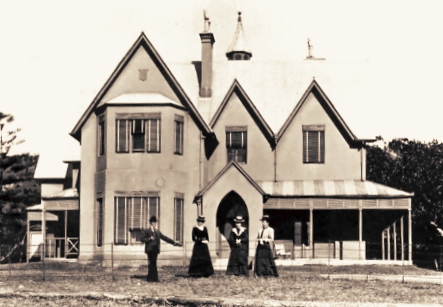 Augusta Maria Mitchell
Augusta Maria Mitchell
James Mitchell's first
daughter, Augusta, was born in 1834. In 1860, she married Edward Christopher
Merewether who had arrived in Australia in 1838 as private secretary and aide
de camp to Governor Sir George Gibbs. Augusta and Edward built an imposing family
home, 'The Ridge' (pictured right in the Merewether family days). The house
survives in Curry Street, Merewether - once again a private residence, following
service as a Salvation Army Mothers Home and a maternity hospital.
Augusta and Edward's great grandson, Edward John
Merewether (my fourth cousin, and in his eighties) visited me in August 2002. I
was able to take him on a tour of Clinkhill, Capeldrae, Auchterderran
Churchyard and the Mitchell Hall, Kinglassie. (Postscript - sadly, Edward John Merewether died on 1 March 2008.)
David Scott Mitchell
The Mitchell Library in
Sydney is named after its major benefactor, David Scott Mitchell, the son of Dr
James Mitchell. Born in 1836, David Scott Mitchell was one of the first
graduates of the University of Sydney where he won a scholarship in mathematics
and prizes in physics and in chemistry. After graduation, he was admitted to
the bar but he never practised.
He left the management of the
large estates which he inherited, mostly in the Hunter region, to agents, and
devoted his life to collecting books. His reclusive life some blamed on a brief
but broken romance with Emily, daughter of Sir William Manning, but that was
never confirmed. Others have suggested that he might have been gay.
He amassed a gigantic
collection of literary works, which, on his death in 1907, along with an
endowment of £70,000, passed to the people of New South Wales. One of the
conditions of Mitchell's donation was that a new building be erected to house
the collection as a separate library. The Mitchell Wing of the State Library of
New South Wales was opened on 8 March 1910 with over 60,000 volumes and many
other priceless historical materials - described as an 'immense and
unrivalled collection of Australiana' and 'one of the greatest
national collections in the world'. This wing now houses the Mitchell
Library reading rooms, work areas and galleries.
Margaret Scott Mitchell
Margaret, the second daughter
of James Mitchell, was born in 1840. On the death of her father in 1869, she
inherited the Booragul/Teralba section of his estates. There was some excitement
the following year, when Margaret eloped with the family coachman,
William Bell
Quigley. The couple married on 8 March 1870. They made their home at Awaba Park, on the
waterfront at Booragul. William Bell Quigley was killed in an accident on 18 March 1879.
His wife Margaret died of burns received when her house was destroyed by fire
in November
1886. The Quigleys' grave is just off Primrose Street in Booragul. A new home
was built on the site of the original, and occupied by the children. The
Perpetual Trustee Company administered the Quigley Estate for many years. The
Quigley's unmarried daughter, Augusta Sophia, died in 1972, at
the grand old age of 98. She left an estate valued at $1.5 million.
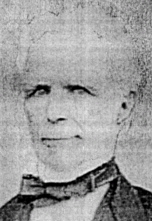 Personal matters
Personal matters
Pictured
right is Dr James Mitchell in his later years (photo courtesy of John Merewether, who told me that this craggy Scotsman is probably a better likeness than the romantic portrait by Marshall Claxton which is at the top of this page!).
I conclude this article with
comments on a couple of striking coincidences.
The paths of the descendants of
Dr James Mitchell and of the descendants of his brother, David, could not have
been more different. David Scott Mitchell inherited a fortune, indulged his
literary passions, and then, Carnegie-like, donated the fruits of his labours
to the people of New South Wales and created a fine new public library in
Sydney.
His full cousin, James (son
of Dr James' brother, David), was an agricultural labourer. Between his two
marriages, he fathered an illegitimate son in a brief liaison with a domestic
servant, Ann Lothian. This son (my grandfather) took the name James Lothian
Mitchell. Despite his troubled origins, he rose to become head teacher of
Burntisland School at the age of 29. He was also politically active, and his
greatest achievement was his successful battle - and it was a battle! - to
secure for Burntisland its fine new public library, which was donated and
opened by Andrew Carnegie in 1907.
I do not know if James
Lothian Mitchell knew anything of the exploits of his great uncle, Dr James
Mitchell. If he did, he might not have approved! In the context of Andrew
Carnegie, it is recorded that he was 'not a strong admirer of any man who
amassed so many millions'. On the other hand, James Lothian Mitchell
shared with Dr James the fact that both men were highly principled. Each in their different ways fell out with those who formed the establishment in their respective spheres, and as a result suffered dismissal from their posts - James Lothian Mitchell as head teacher of
Burntisland School because he refused to withdraw from local politics; and Dr
James Mitchell as Colonial Surgeon because he refused to accept changes in the
Colonial Medical Department imposed by a new departmental head.
Links
Australian Dictionary of Biography - Dr James Mitchell
Australian Dictionary of Biography - David Scott Mitchell
State Library of New South Wales - 2007 Exhibition: 'A Grand Obsession: The D.S. Mitchell Story'
Burntisland.Net - James Lothian Mitchell
Further Reading
'Dr James Mitchell' (Newcastle History Monographs No. 1) by C.E. Smith, Newcastle Public Library, 1966.
IAIN SOMMERVILLE
(with significant - and much
appreciated - assistance from Ken Shilling
of Merewether Heights, New South Wales; Hilda Hansen
of Mayfield, NSW, and her sister-in-law, Pat; and Peter Stout of New Zealand)
June 2004 (subsequently updated)
Return to home page



 The original register is confusing at this point - the
year of birth looks like 1793, although the entries are mixed up and it might have been 1792 or 1794. Australian biographies usually say that he was born in 1792. I
therefore looked into this in some detail. I first of all satisfied myself that
baptisms took place on Sundays, and then checked to see in which of these three
years the 27th of January fell on a Sunday. This happened only in 1793. I
therefore concluded that James Mitchell was born at Clinkhill on Thursday, 24th
January, 1793, and baptised on Sunday, 27th January, 1793. The baptism would have taken place in St Bridget's Kirk,
Dalgety (pictured right; photo courtesy of Eric Simpson). There was no civil registration in Scotland at the time and
therefore no birth certificates, so it is understandable that some biographies give the wrong year for the birth. It is also possible that James himself was the source of the error. Perhaps at some stage in his early life he had to lie about his age, and maintained the fiction thereafter.
The original register is confusing at this point - the
year of birth looks like 1793, although the entries are mixed up and it might have been 1792 or 1794. Australian biographies usually say that he was born in 1792. I
therefore looked into this in some detail. I first of all satisfied myself that
baptisms took place on Sundays, and then checked to see in which of these three
years the 27th of January fell on a Sunday. This happened only in 1793. I
therefore concluded that James Mitchell was born at Clinkhill on Thursday, 24th
January, 1793, and baptised on Sunday, 27th January, 1793. The baptism would have taken place in St Bridget's Kirk,
Dalgety (pictured right; photo courtesy of Eric Simpson). There was no civil registration in Scotland at the time and
therefore no birth certificates, so it is understandable that some biographies give the wrong year for the birth. It is also possible that James himself was the source of the error. Perhaps at some stage in his early life he had to lie about his age, and maintained the fiction thereafter..jpg) David Mitchell senior died in
1829, and his wife, Margaret Low, followed him in 1838. They, and three of
their children - David, Jean and William - are buried in Auchterderran
Churchyard. Even though son James was by then so far away in Australia, he
received the same attention in his father's will as did the other children. Pictured on the right is the headstone at Auchterderran. Yes, it is leaning!
David Mitchell senior died in
1829, and his wife, Margaret Low, followed him in 1838. They, and three of
their children - David, Jean and William - are buried in Auchterderran
Churchyard. Even though son James was by then so far away in Australia, he
received the same attention in his father's will as did the other children. Pictured on the right is the headstone at Auchterderran. Yes, it is leaning! Augusta Maria Mitchell
Augusta Maria Mitchell Personal matters
Personal matters